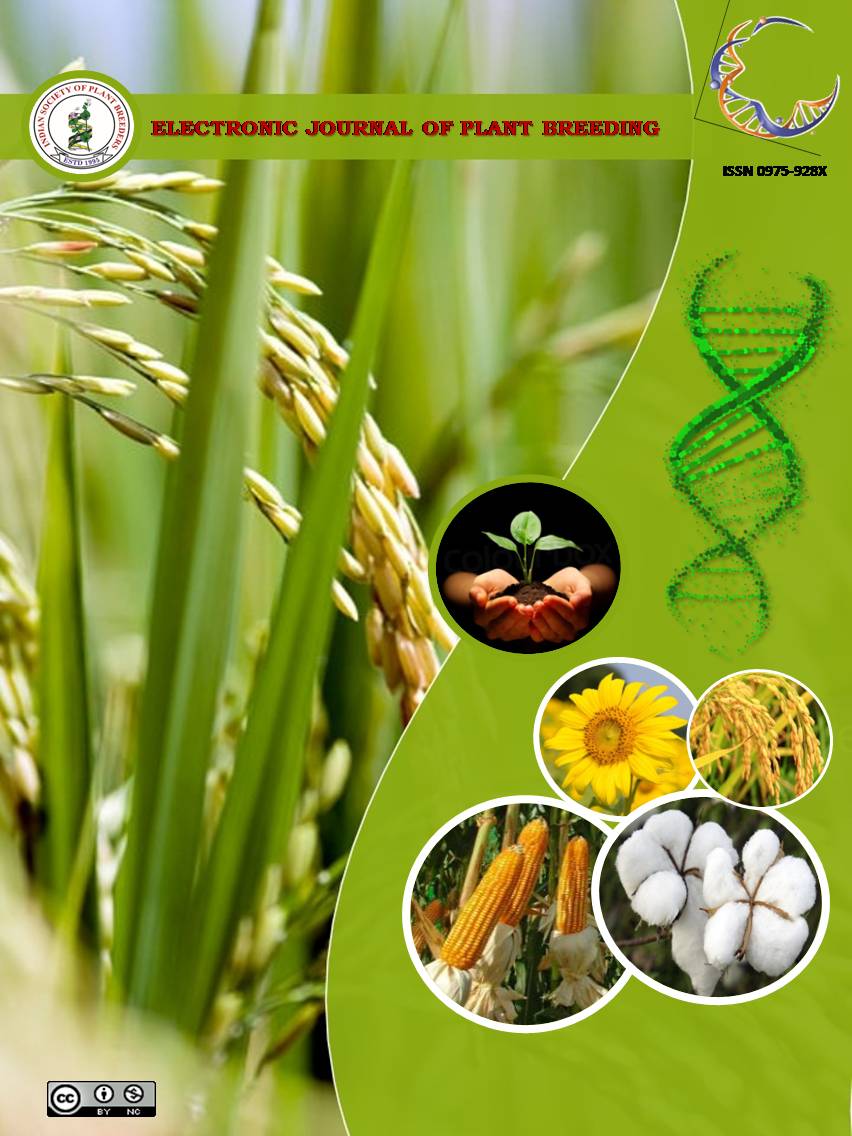Comparative performance of parametric and non-parametric measures for analyzing G x E interactions of grain yield for dual Purpose Barley genotypes
Abstract
Present study aimed to compare parametric with non parametric measures for the adaptability bevaiour of fifteen dual purpose barley genotypes evaluated at ten locations under coordinated system of Barley network. Regression coefficients less than one attained by five genotypes while more than one by the six genotypes. Lower environmental variance exhibited by G14 followed by G03 and G15 whereas higher by G11 G10 and G5. Higher values of W2i by G11, G10, and G5 pointed out higher contribution to G x E interaction. Adaptable genotype would be G5, G7 and G8 as claimed by lower Pi values. GAI identified G20 genotype, followed by G7, G5, and G6, better in terms of yield and adaptability. Si (1) and Si (2) measures pointed G14 & G8 while Si (3) and Si(6) selected G14 followed by G4 and G10. NPi(1), NPi(2) and NPi(3) considered G1 and G14 as stable genotypes whereas as per NPi(4) G5 & G6 were of unstable types. Grain yield expressed significant negative relation with Si(6), NPi(2), NPi(3), NPi(4) while positive with Kang sum rank. bi was negatively correlated with Wi2 , S2xi , CVi, and s2i. Superiority index expressed significant negative association with NPi(2), NPi(3), NPi(4) and direct positive relation with Si (2), NPi (1). Biplot analysis based on PCA1 versus PCA2 clustered measures in 3 major groups. Larger clubbed NPi (1), Si(1), Si(2), Wi2, s2i, S2xi along with Kang whereas separate group comprised of yield, with GAI & Pi.

It is certified that:
- The corresponding author is fully responsible for any disputes arising due to the publication of his/her manuscript.
- The article has been seen by all the authors who are satisfied with its form and content.
- The sequence of names of authors in the by-line is as per their relative contribution to this experiment, giving due credit to all scientists who made notable contribution to it.
- All the authors fully understand that inclusion of any other co-authors or exclusion of any co-authors is not possible once the article has been submitted to the journal.
- The corresponding author takes full responsibility for this article.
- The address of the organization where the research was conducted is given.
- The article is exclusive for this journal, and the results reported here have not been sent (and will not be sent during its consideration by this journal) for publication in any other journal.
- Authors agree to abide by the objective comments of referees and do agree to modify the article into a short note as per the recommendation, for publication in the Electronic Journal of Plant Breeding.
- If published in Electronic Journal of Plant Breeding, the copyright of this article would vest with the Indian Society of Plant Breeders, who will have the right to enter into any agreement with any organization in India or abroad engaged in reprography, photocopying, storage and dissemination of information contained in it, and neither we nor our legal heirs will have any claims on royalty.


